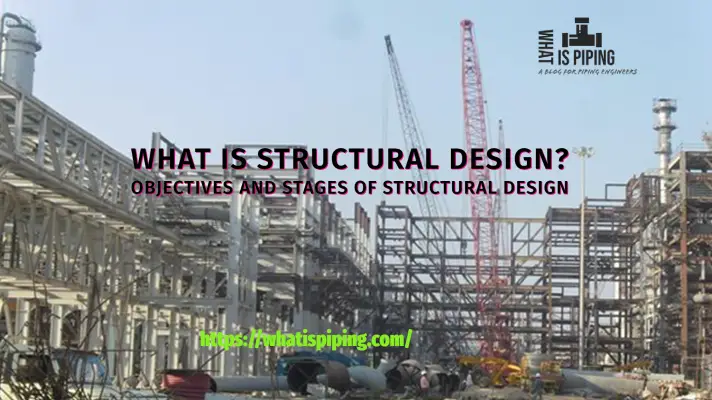Civil and structural engineering professionals play a crucial role in the design and construction of various oil and gas, chemical, and petrochemical industries, power plants, and various other infrastructure projects around the world. To streamline their workflows and enhance efficiency, engineers rely on various powerful software packages specifically designed for civil and structural engineering tasks. These software tools provide advanced functionalities and features that aid in the design, analysis, and visualization of complex structures. In this article, we will explore some of the top civil and structural engineering design software packages available today.
What are Civil and Structural Engineering Software Packages?
Civil Engineering Software are software programs or tools that assist civil and structural engineers during all their major oil and gas and infrastructure projects. In all the stages of Civil and Structural engineering activities like drafting, designing, visualization, analysis, and reviewing, a lot of software packages are used. Civil and Structural Engineering Software packages offer solutions for structural analysis, model design, and project management. These tools include computer-aided design tools(CAD tools), plant, building, road, and bridge network modeling (2D and 3D modeling tools), structure visualization tools, geological modeling, impact analysis, and simulation of actual plant working.
Benefits of Civil Engineering Software Programs
Whether the project involves designing superstructures for refineries, measuring the impact of earthquakes or storms on structural systems, or creating simulations of residential development construction, there is a wide selection of Civil and Structural Engineering Software that meet the requirements of Structural and Civil Engineers. Depending on the project’s complexity, there are general-use software tools and specialized software products. Regardless of its focus, the main benefits that Civil Engineering Software programs provide are:
Streamlined Design Process:
Engineering software tools provide a range of specialized functionalities that streamline the design process. These tools offer intuitive interfaces, automated features, and intelligent modeling capabilities, allowing engineers to create accurate and detailed designs in less time.
Increased Accuracy:
Software tools enable engineers to perform complex calculations and simulations with a high degree of accuracy. They use advanced algorithms and analytical methods to analyze structural behavior, assess loads and forces, and determine the structural integrity of designs. This helps engineers identify potential issues and make informed decisions to optimize their designs.
Enhanced Visualization:
Visualizing structures in 3D is an essential aspect of civil and structural engineering. Software tools provide realistic 3D modeling and visualization capabilities, allowing engineers to better understand the spatial relationships and behavior of their designs. This aids in identifying potential clashes or interferences, optimizing layouts, and communicating design intent effectively.
Efficient Collaboration:
Engineering software tools enable seamless collaboration among multidisciplinary teams, including architects, engineers, contractors, and other stakeholders. They facilitate data sharing, version control, and real-time collaboration, reducing errors, conflicts, and delays during the design and construction phases of a project.
Cost and Time Savings:
By automating repetitive tasks and providing preconfigured templates and libraries, engineering software tools significantly reduce the time required for design iterations and revisions. This leads to increased productivity and cost savings. Additionally, software tools help optimize designs, improving material efficiency and reducing construction waste.
Compliance and Code Adherence:
Many civil and structural engineering software tools incorporate industry standards and building codes. They ensure that designs meet safety regulations and code requirements. These tools can perform code checks, generate compliance reports, and help engineers adhere to the necessary guidelines.
Simulations and Analysis:
Engineering software tools enable engineers to perform advanced simulations and analysis, such as finite element analysis (FEA) or structural dynamics analysis. These capabilities allow engineers to assess the behavior and performance of structures under different loading conditions, helping to identify potential weaknesses, optimize designs, and ensure structural integrity.
Documentation and Reporting:
Software tools provide comprehensive documentation and reporting features, allowing engineers to generate detailed construction drawings, reports, and specifications. These tools automate the creation of documentation, reducing errors and ensuring consistency throughout the project lifecycle.
All these tools help civil and structural designers to focus on more complex projects.
Best Civil Engineering Software Programs
There are a lot number of civil and structural engineering software packages available in the market today. Some of those are:
- AutoCAD,
- Autodesk Civil 3D,
- MicroStation,
- Bentley ProjectWise,
- OpenRoads Designer,
- CSI SAP2000,
- CSI SAFE,
- Solidworks,
- CSI ETABS,
- Bentley STAAD Pro,
- GeoHECRAS,
- ArcGIS CityEngine,
- Revit Structure,
- RISA,
- Navisworks,
- SketchUp,
- OpenRoads Designer,
- ActCAD Software,
- GeoHECRAS,
- Midas Civil,
- Midas GTS NX,
- SkyCiv Structural 3D,
- GeoStudio,
- 4MCAD,
- Smart Plant Review (SPR),
- Bentley PLAXIS 3D,
- ZWCAD.

Here are the top 8 structural and civil engineering design and analysis software packages are are most widely used among industries.
1. AutoCAD
AutoCAD is a widely used computer-aided design (CAD) software program that has various applications in civil engineering. It allows engineers to create 2D and 3D models of structures, produce detailed drawings, and generate documentation for construction projects. AutoCAD is versatile and efficient which can easily produce precise and accurate designs in very less time. Also, it has a great interface with many other software programs. Some of the applications of AutoCAD in civil engineering include:
- Drafting and Design
- Site Design and Land Development
- Infrastructure Design
- Secondary Pipe Support Design
Note that AutoCAD is one of the top best piping design software packages also.
2. STAAD.Pro
STAAD.Pro is a versatile structural analysis and design software package developed by Bentley Systems. It is widely used for the analysis and design of a variety of structures, including buildings, bridges, towers, and industrial plants. STAAD.Pro offers advanced analysis capabilities, including linear and nonlinear static and dynamic analysis, as well as integrated design modules for steel, concrete, timber, and aluminum structures. Its user-friendly interface and powerful analytical capabilities make it a popular choice among structural engineers.
3. Revit Structure
Revit Structure is a Building Information Modeling (BIM) software package that focuses on the structural design and documentation of building projects. It allows engineers to create intelligent 3D models, perform integrated analysis and design, and generate construction documentation. Revit Structure enables seamless collaboration among architects, engineers, and contractors, promoting efficient coordination and reducing errors during the design and construction phases.
4. AutoCAD Civil 3D
AutoCAD Civil 3D is a widely used software package that combines the power of AutoCAD with specialized tools for civil engineering design and documentation. It offers features such as dynamic modeling, intelligent objects, and automated drafting capabilities. Civil 3D enables engineers to create 3D models, perform geospatial analysis, generate construction documentation, and design roadways, land development projects, and water systems.
5. SAP2000
SAP2000 is a highly advanced structural analysis and design software program that is widely used by civil and structural engineers. It offers a comprehensive suite of tools for static and dynamic analysis, as well as design capabilities for various structures including buildings, bridges, dams, and towers. SAP2000’s user-friendly interface and robust analysis algorithms make it a popular choice for engineers involved in complex structural design projects.
6. ETABS
ETABS (Extended Three-Dimensional Analysis of Building Systems) is another powerful software package for structural analysis and design. It is specifically tailored for the analysis and design of building systems, including high-rise structures. ETABS offers a wide range of analysis options, such as static, dynamic, and nonlinear analysis, as well as features for the design of steel, concrete, and composite structures. Its intuitive modeling tools and comprehensive analysis capabilities make it an indispensable tool for structural engineers.
7. SAFE
SAFE is a specialized software package developed for the analysis and design of foundation systems, slabs, and mat foundations. It is commonly used in civil engineering for the design of reinforced concrete structures. SAFE offers advanced structural analysis capabilities and helps in design optimization. It can integrate with structural analysis and design software packages, such as SAP2000 and ETABS, allowing seamless transfer of models and data.
8. RISA
RISA is a suite of software programs developed for structural analysis and design. It provides comprehensive tools for analyzing and designing various types of structures, including buildings, bridges, and towers. With its robust user-friendly interface, RISA provides strong analysis capabilities.
Conclusions
The field of civil and structural engineering relies heavily on software tools to design and analyze complex structures. The software packages mentioned above, including AutoCAD Civil 3D, SAP2000, ETABS, STAAD-Pro, RISA, SAFE, and Revit Structure, offer a range of advanced features and capabilities that enhance the productivity and efficiency of engineers. By leveraging these tools, civil and structural engineers can streamline their workflows, optimize designs, and ensure the safety and integrity of their projects. Choosing the right software package that aligns with the specific needs and requirements of a project is crucial for successful outcomes in the field of civil and structural engineering.









2024’s top civil and structural engineering software: SAP2000, ETABS, Tekla Structures, RAM Structural System, RISA, Revit Structure, STAAD.Pro, AutoCAD.